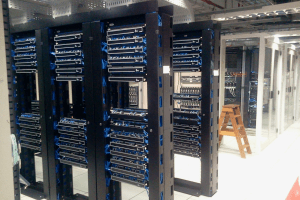It’s 8:30 in the morning on Day 3 of the MDM & Data Governance conference and Aaron Zornes, Chief Research Officer of The MDM Institute, is about to introduce a panel of three experts who will address an intimate room of 100 or so attendees.
For most of us in attendance, this is going to be our 10th – 12th session. Still, after all the sessions attended, all the presentations watched, and all the case studies heard, one of the first questions to the panel was, “how do I begin my project?”
One of the panelists remarked, “That’s a phenomenal question!” as he proceeded to explain how he’d begin the journey by assessing an organization's data processes. It was a pretty pragmatic answer and one that had me, along with many others in the room, nodding our heads in satisfaction.
After all, I think we can agree that being able to identify where your data resides (warehouses, marts, CRM’s, ERP’s, other databases, etc...), how it flows through the organization (where is the data being captured, accessed and stored?), and ultimately where and how it’s being used (what value is the data bringing to the business?), is necessary before undergoing a successful data initiative.
Whether you’re in search of executive-level approval, or you already have it, the first thing on your mind will be, “how can I show value back to the business as quickly as possible?”
By focusing on data processes first, you’re putting yourself at risk of delays from day one. This is because this work requires lots of internal discussion and auditing of systems and people. As a result, unless you know exactly who is in charge and who has access to every system, it is inevitably going to take weeks, if not months to execute a proper assessment (that's the sound of consultants taking hundreds of billable hours to the bank.)
What's most concerning about this approach is that even if your assessment is flawless, the ability to support the analysis with quantifiable value is far more unlikely than if you began with something tangible.
Believe me, if your business is about to spend hundreds of thousands, to millions of dollars on a project, the first thing the executive sponsors are going to want to see is that their investment is delivering value. Whether the goal of the project is to make your data more operational or analytical, at the end of the day the only question that really matters is, does the project positively impact the organization's bottom line? Although beginning with your processes can work, I think the best place to begin is by actually diving into the data and assessing its overall health.
Through data profiling and discovery, you’re going to be able to uncover the quality of your data in a fraction of the time that it would take to assess your processes. Additionally, your data quality (or lack thereof) then becomes your road map on where and how to move forward with each phase of the project. How can you build a data management strategy if you don’t know what existing data issues you have? How can you implement a new system if the data is not accurate and standardized?
Don’t lose sight of the fact that your project’s end goal should be to make your data more accessible and actionable than ever before. As a result, your organization is no longer going to view data as a cost of doing business.
During the conference, it was discussed that in every successful data initiative one must consider people, processes, tools, and data. For me, if you value the data and place its quality at the center of your entire project—what people you need, which processes need to be altered or created, and which technology is the best fit for your needs—everything else will fall into place around it seamlessly.
Looking for more insight into how data quality should be the first step in every data initiative? Check out our white paper, Data migrations begin (and end) with data quality.
Download








